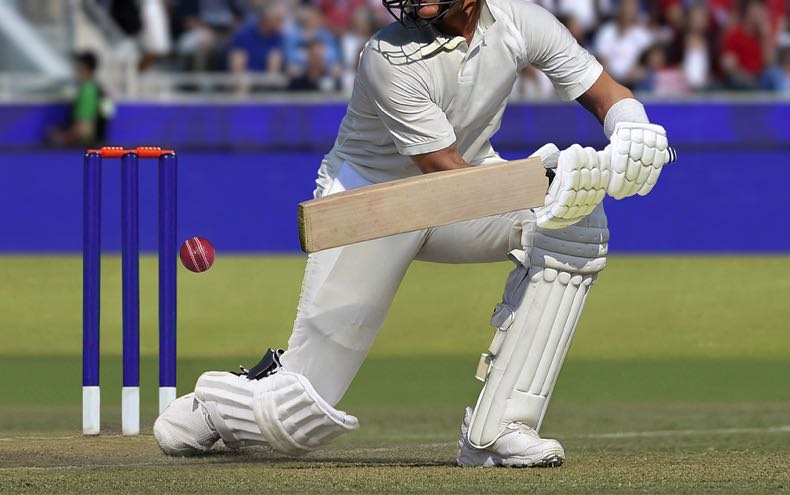 Cricket is an ever-changing sport. One of the things watchers have become used to in the modern game is the power play or, more accurately, the ‘powerplay’. In one-day cricket, or ‘limited overs’ cricket, when fielding restrictions are introduced, it is known as a powerplay.
Cricket is an ever-changing sport. One of the things watchers have become used to in the modern game is the power play or, more accurately, the ‘powerplay’. In one-day cricket, or ‘limited overs’ cricket, when fielding restrictions are introduced, it is known as a powerplay.
Powerplays were first introduced in Australia during their domestic 1980-1981 season. As of 1992, fielding restrictions were introduced into one-day international cricket as well. Those restrictions were officially renamed ‘Powerplay’ by the ICC, International Cricket Council, in 2005.
Test cricket has always been very different from the one-day game. In the limited overs game, fielders are spread out around the field to save runs being scored. Powerplays, however, along with a number of other initiatives, have led to some huge scored being recorded in ODIs since 1992. During powerplays, only a certain number of fielders can stand outside the designated circle. This means it is easier for aggressive batsmen to lift the ball up and over the fielders.
Powerplay Rules by Match Type

Traditional one-day international games and the more recent Twenty20 matches differ when it comes to powerplays. The powerplays are mandatory but for a different number of overs depending on the game type.
One-Day Internationals (ODI)
The following applies in one-day international cricket:
- First 10 Overs: During the first ten overs, two fielders maximum are allowed outside the 30-yard or 27-metre circle. This is the First Powerplay.
- Overs 11 – 40: Between overs 11 and 40, up to four fielders are allowed to stand outside the 30-yard circle.
- Final 10 Overs: During overs 41-50 of an ODI, up to five fielders may stand outside of the 30-yard circle.
Twenty20 Cricket
T20 cricket is naturally a little different given that only 20 overs per side are bowled. In the majority of domestic leagues, as well as international T20 cricket, the first six overs of the innings are mandatory powerplays. At this point, only two fielders are allowed outside the circle. From the seventh over onwards, a maximum of five fielders may be outside the circle.
In the Big Bash League the powerplay changes slightly. The powerplay here only covers the opening four overs. Furthermore, the batsmen get to choose when those same restrictions apply in the second half of the innings, for a period of two more overs. This is known as the Powersurge.
100-Ball Cricket
In the new form of 100-ball cricket, powerplays are active in the first 25 balls of the innings only. During that time, only two fielders can stand outside of the 30-yard circle. Only legal deliveries count towards the 25 balls.
The History of Cricket Powerplays
As we mentioned, cricket really does evolve. Though introduced in the 80s in Australia, fielding restrictions actually go all the way back to the 70s in World Series Cricket. In the early days, two fielders were allowed outside the circle for a full 15 overs, with five allowed outside for the remaining balls bowled.
Classification of the powerplay came from the ICC in 2005. They decided that fielding restrictions would be split into three blocks. There would be mandatory ten-over powerplay at the beginning of an innings before two more five-over periods of fielding restrictions.
Both powerplays were taken by teams at the earliest chance on most occasions. To balance this, in 2008 the batting side was handed discretionary timing for one of the powerplays. Things moved on a gain in 2011. From October 1 that year, the ICC brought forward more changes to batting and bowling powerplays.
In a 50-over game, neither of the five-over powerplays were allowed to be taken before the beginning of the 16th over. As well as this, both powerplays were to be completed before the start of 41st over. Should neither team nominate a powerplay, it will start automatically at the latest possible point. The ICC made more amendments in 2012. From October 29, they reduced the number of blocks from three to two.
Are Powerplays a Good Thing for Cricket?

Fielding restrictions have changed the way the one-day game is played, especially from the 1990s onwards. Many bowlers may go home feeling battered and bruised after playing limited overs cricket, but the powerplay-fuelled aggressive batting is good for the fans and certainly looks better on TV. Big scores are now the norm and in fact, it has helped bowlers to hone their skills and it has become harder and harder to restrict runs, meaning there is a concentration on quality economical bowling under pressure.
